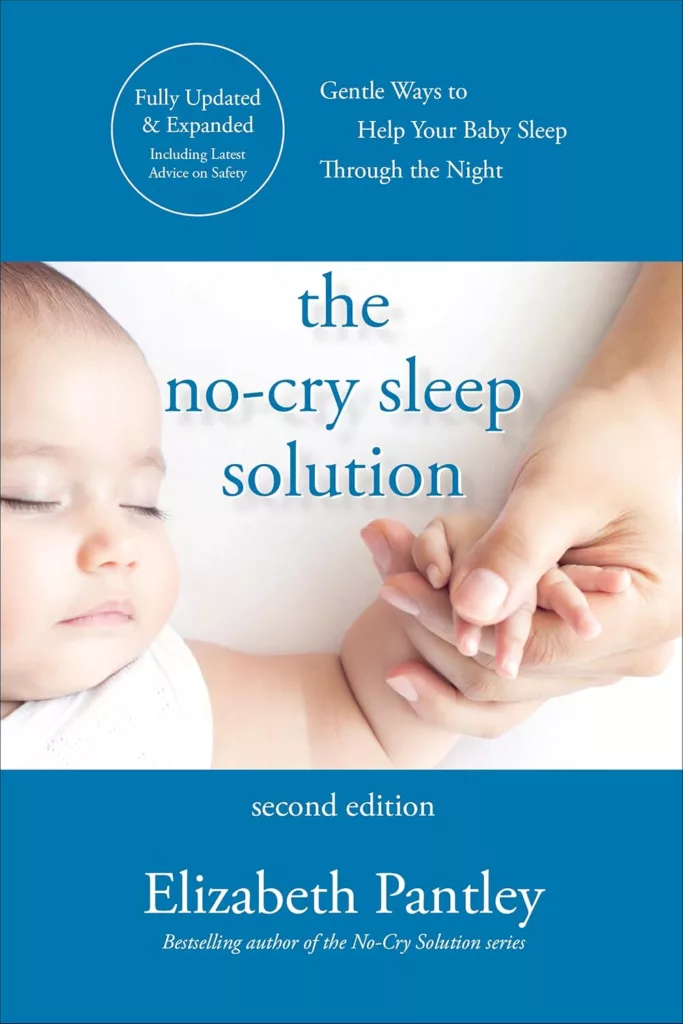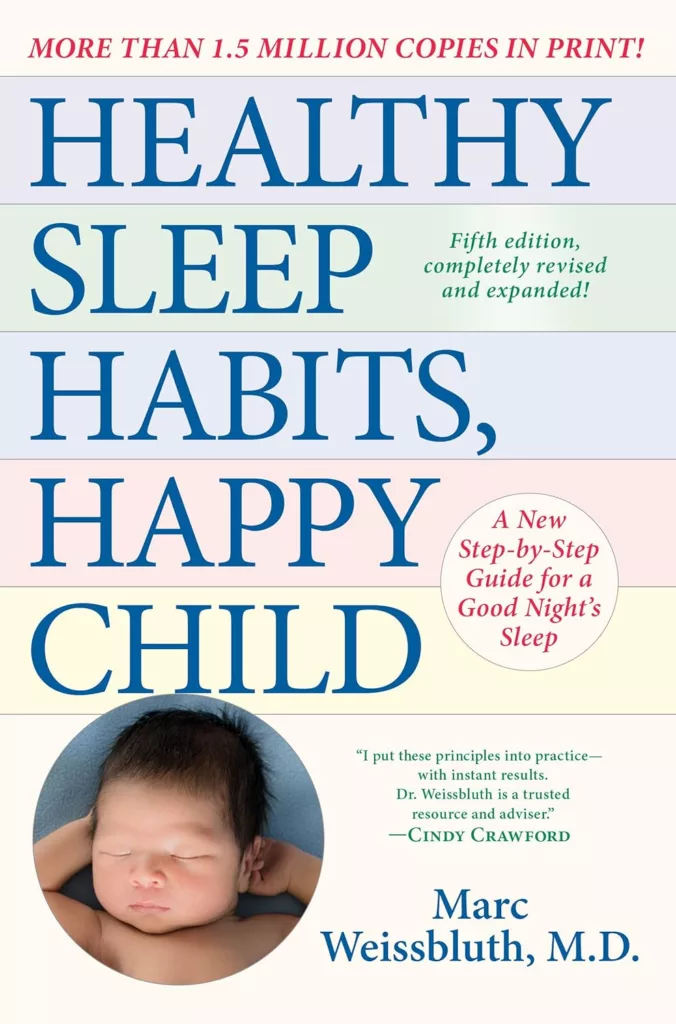Introduction
If you’re a new parent, you’ve likely realized how crucial sleep is—not just for your own well-being, but more importantly for your baby’s development. Sleep plays a pivotal role in a baby’s growth, helping with brain development, learning, and overall health. However, getting your baby to sleep through the night consistently can be one of the biggest challenges in early parenthood. That’s where sleep training comes in, offering parents a structured approach to help their little ones develop healthy sleep habits.
In this comprehensive guide, we’ll explore everything you need to know about the best baby sleep training books, methods and tips; from understanding the basics, dispelling myths, and comparing popular sleep training methods to providing practical tips for success. Whether you’re a new parent looking for guidance or someone in the thick of sleep deprivation, this guide will equip you with the knowledge and confidence to help your baby (and yourself!) get the restful nights you need.

Table of Contents
What Is Sleep Training?
At its core, sleep training is the process of teaching your baby to fall asleep independently and stay asleep throughout the night. While the primary goal of sleep training is to help your baby sleep better, it’s also about fostering healthy sleep habits that can last a lifetime. The benefits of proper sleep extend beyond infancy, influencing a child’s mood, cognitive abilities, and even physical growth.
Sleep training isn’t a one-size-fits-all solution; it can be customized to suit your baby’s needs and your parenting style. This is especially important because there are several misconceptions about sleep training, most notably the idea that it’s simply about letting a baby “cry it out” until they tire out. While some methods involve controlled crying, sleep training doesn’t necessarily mean abandoning your baby’s needs. With a thoughtful approach, you can balance sleep training with responsive and loving care.
Signs Your Baby Is Ready for Sleep Training
Before diving into sleep training, it’s essential to recognize the signs that your baby is ready. Sleep training generally becomes more effective when a baby has developed the ability to sleep for longer stretches and has a somewhat predictable sleep schedule. This typically occurs between 4 to 6 months of age, but every baby is different.
Here are a few signs your baby may be ready for sleep training:
- Longer sleep intervals: Your baby may be able to sleep for 4-6 hours at a time without needing to be fed.
- Predictable sleep patterns: If your baby is falling into a more regular sleep-wake cycle, they may be ready for more structured sleep training.
- Ability to self-soothe: Babies who can calm themselves down when slightly upset are better equipped to learn independent sleep habits.
Always consult with your pediatrician before starting sleep training to ensure your baby’s readiness and to address any health concerns.
Comparing Popular Sleep Training Methods
There are several well-known sleep training methods that parents can choose from, each with its own philosophy on how to help babies learn to fall asleep independently. Let’s explore the most popular approaches to help you decide which one aligns best with your baby’s temperament and your parenting style.
1. Cry-It-Out (Extinction) Method
The Cry-It-Out method, sometimes associated with Dr. Richard Ferber, involves allowing your baby to cry for certain intervals before you provide comfort. The idea is to gradually increase the time between when your baby starts crying and when you respond, encouraging them to self-soothe and fall asleep on their own. Contrary to some misconceptions, this method is not about abandoning your baby but about giving them the opportunity to develop independent sleep skills.
Pros:
- Results are typically achieved quickly, often within a week.
- Teaches strong self-soothing skills.
Cons:
- Can be emotionally challenging for parents.
- Not ideal for babies with a sensitive temperament.
2. No Tears Method
The No Tears method, championed by parenting experts like Elizabeth Pantley, focuses on a gentler transition to independent sleep. Instead of letting your baby cry, this approach involves comforting your baby immediately and gradually reducing the amount of help you provide. The goal is to foster a secure sleep environment while teaching your baby to sleep without unnecessary stress or tears.
Pros:
- Gentle on both baby and parents.
- Can strengthen the parent-child bond during bedtime.
Cons:
- May take longer to achieve consistent results.
- Requires patience and persistence.
3. Fading (Gradual Retreat) Method
The Fading method, also known as the “chair” or “camping out” method, is a middle ground between Cry-It-Out and No Tears. It involves gradually reducing your presence at bedtime over several nights. For example, you might sit beside your baby’s crib the first night and slowly move farther away each subsequent night until your baby can fall asleep without you in the room.
Pros:
- Allows babies to develop sleep skills without abrupt changes.
- Less emotional strain for parents compared to Cry-It-Out.
Cons:
- Can take several weeks to implement.
- Requires careful consistency.
Gentle Strategies for Sleep Training Success
If you’re not comfortable with the more rigid or intense methods of sleep training, don’t worry—there are gentle approaches that can still yield great results. These methods focus on creating a calm, comforting, and responsive environment for your baby.
1. Establish a Consistent Bedtime Routine
A predictable and soothing bedtime routine is essential for signaling to your baby that it’s time to sleep. Activities such as a warm bath, quiet story time, and cuddles can help your baby relax and feel secure. The routine doesn’t need to be elaborate; the key is consistency. Following the same steps each night helps your baby associate those actions with winding down and preparing for sleep.
2. Optimize the Sleep Environment
Creating a sleep-friendly environment can make all the difference in how well your baby rests. Ensure that the room is dark, quiet, and set at a comfortable temperature. You might want to invest in blackout curtains to block out light, and a white noise machine can help drown out background noises that might disturb your baby’s sleep.
3. Practice Responsive Nighttime Parenting
Gentle sleep training doesn’t mean leaving your baby to fend for themselves at night. Responsive parenting means attending to your baby’s needs—whether they need feeding, changing, or comforting—while still encouraging them to develop independent sleep skills. Over time, as your baby learns to self-soothe, you can gradually reduce the number of nighttime interventions.
4. Maintain a Close Bond While Encouraging Independence
One of the biggest concerns parents have about sleep training is that it may harm the bond they have with their child. However, when done with empathy and care, sleep training can actually strengthen your relationship. By fostering independence, you’re helping your baby develop confidence and security. Babies who sleep well are generally happier and more content, which benefits the whole family.
Addressing Common Challenges
Every sleep training journey has its ups and downs. It’s normal to encounter obstacles along the way, but with the right strategies, you can overcome them.
1. Sleep Regressions
Babies often experience sleep regressions around certain developmental milestones, such as when they start crawling or walking. During these times, your baby might wake up more frequently at night or resist naps. Stay consistent with your sleep training routine, and remember that regressions are temporary.
2. Resistance to Sleep Training
Some babies might resist sleep training initially, especially if they’ve grown accustomed to being rocked or nursed to sleep. This resistance is normal and expected. The key is to stay consistent with your chosen method and give it time to work.
3. Different Temperaments
Every baby is unique, and what works for one child may not work for another. If one sleep training method doesn’t seem to be effective, don’t hesitate to try a different approach. Flexibility is important as you navigate the sleep training process.
Ensuring Safety During Sleep Training
While sleep training can improve sleep quality for your baby, it’s critical to ensure that their sleep environment is safe. The American Academy of Pediatrics (AAP) provides several recommendations to reduce the risk of Sudden Infant Death Syndrome (SIDS):
- Always place your baby on their back to sleep.
- Use a firm mattress in a safety-approved crib.
- Keep the crib free of toys, pillows, and loose blankets.
- Ensure the room is at a comfortable temperature to prevent overheating.
Adhering to these guidelines throughout the sleep training process will provide peace of mind, knowing your baby is safe while learning to sleep independently.
Seek Support When Needed
Sleep training can be emotionally taxing for parents, especially during the early stages. If you’re feeling overwhelmed or unsure, don’t hesitate to reach out for help. Consulting with a pediatrician or a child sleep specialist can provide you with valuable insights tailored to your baby’s specific needs. Additionally, joining a parenting support group, either locally or online, can connect you with other parents going through the same challenges.
Further Reading and Resources
To dive deeper into sleep training, it’s essential to reference expert opinions, research-based methods, and real-life experiences. Here are some trusted sources and experts that informed this guide, and which can provide further insights into your sleep training journey:
Dr. Richard Ferber’s “Solve Your Child’s Sleep Problems”: A widely recognized resource, this book outlines the Cry-It-Out (Ferber) method, explaining its rationale and offering practical tips for implementation.
Check this out on Amazon – It has over 2,500 reviews with an average of 4.6 stars!Elizabeth Pantley’s “The No-Cry Sleep Solution”: This book is the go-to guide for parents seeking a gentler, tear-free approach to sleep training, offering step-by-step strategies to help babies sleep through the night without stress.
Check this out on Amazon – It has over 500 reviews with an average of 4.0 stars!“Healthy Sleep Habits, Happy Child” by Dr. Marc Weissbluth: This resource delves into the science behind baby sleep cycles and offers a range of strategies, from sleep training to general sleep hygiene, to suit different parenting styles.
Check this out on Amazon – It has over 500 reviews with an average of 4.6 stars!


The American Academy of Pediatrics (AAP): The AAP provides extensive guidelines on safe sleep practices, from crib safety to SIDS prevention. Their website is a valuable resource for parents seeking evidence-based recommendations for baby care and sleep.
Baby Sleep Consultants & Pediatricians: Consulting with a professional sleep consultant or pediatrician can provide personalized advice tailored to your baby’s developmental stage, temperament, and any specific sleep challenges you may encounter.
By integrating expert advice from these trusted sources, you can feel more confident in your sleep training journey. Always remember that each baby is unique, and finding what works for your family is key to success.
Final Thoughts
Sleep training is a journey that requires patience, consistency, and flexibility. By choosing a method that aligns with your family’s needs and staying committed, you can help your baby develop healthy sleep habits that benefit their growth and well-being. Remember, every baby is different, and there’s no “right” way to approach sleep training. Trust your instincts, seek support when needed, and know that better sleep for your baby—and you—is achievable.
Additional Resources
Be sure to check out our YouTube Channel for other great content!
While you’re at it, we here at New-Parents have some must reads, such as, New Parent Side Hustle: #1 Best Guide | (new-parents.com) or Best Christmas Gifts For Newborns In 2024: 25 Perfect Picks For Little Ones – Act Now | (new-parents.com).
Here’s a little transparency: Our website contains affiliate links. This means if you click and make a purchase, we may receive a small commission. Don’t worry, there’s no extra cost to you. It’s a simple way you can support our mission to bring you quality content.
